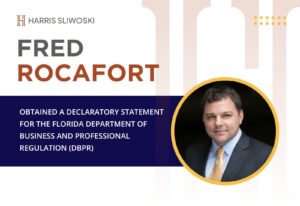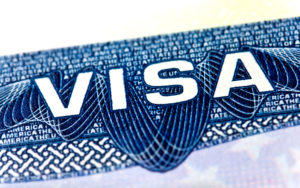The L-1A Visa: A Pathway to the U.S. for Chinese Entrepreneurs
Our law firm’s immigration lawyers have been seeing a big uptick in wealthy Chinese business owners seeking to leave China for the United States.
For the many wealthy Chinese families that choose the United States, migration is spurred not just by the allure of the American Dream but also by concerns over China’s economic slowdown, political repression, and the Chinese Communist Party’s tightening grip on private businesses. Many of you have been reading about the increase in foreign businesspeople being detained by the Chinese government but Chinese businesspeople have it far worse.
As these entrepreneurs explore their U.S. visa options, the L-1A visa category stands out as a particularly attractive pathway, thanks to its provisions for executives and managers.
L-1A Visa Opportunities for Chinese Business Owners and Managers
The L-1A non-immigrant visa is tailored for intracompany transfers of executives or managers. It is intended to facilitate the relocation of these individuals from a foreign office to the company’s U.S. operations. Under the Immigration and Nationality Act (INA), an eligible executive or manager must have been employed outside the United States with the multinational firm or other business entity for at least one year in the preceding three years.
The U.S. Citizenship and Immigration Services (USCIS) further interprets this provision for executives and managers. Executives are defined as employees who direct the management of the organization or a major component of the organization, establish goals and policies, exercise wide latitude in decision-making, and receive only general supervision from higher-level executives, the board of directors, or stockholders of the organization.
Managers, as per the INA and corresponding regulations, are those who supervise and control the work of other supervisory, professional, or managerial employees, or manage an essential function within the organization, or a department or subdivision of the organization. They also have the authority to hire and fire or recommend those and other personnel actions if other employees are directly supervised, or if no other employees are directly supervised, function at a senior level within the organizational hierarchy.
Multinational managers, which include functional managers who might not supervise staff but are responsible for an essential function within the organization, are also eligible for an L-1A visa if their managerial capacity involves managing an essential function, department, or subdivision of the organization.
Why the L-1A Visa Appeals to Chinese Entrepreneurs
China’s entrepreneurs are facing increasingly stringent regulatory environments, particularly in sectors like fintech and private education, which have faced crackdowns by the Chinese government. Furthermore, the Chinese Communist Party’s focus on “common prosperity” has led to increased scrutiny of the wealthy, prompting many to seek more predictable business environments abroad.
The L-1A visa offers a dual-intent option, allowing Chinese business owners to establish or operate an existing business in the U.S. while keeping the option to apply for permanent residency through the EB-1C category. This flexibility makes it a popular option for entrepreneurs looking for long-term stability. In 2023, USCIS reiterated its support for L-1 visa holders transitioning to permanent residency through EB-1C, emphasizing expedited pathways for high-level executives and managers.
Dependents of L-1A visa holders, such as spouses and children under 21, are eligible for L-2 visas. In 2022, the Biden administration expanded benefits for L-2 visa holders, and in 2023, the administration introduced further enhancements allowing automatic work authorization for L-2 spouses, simplifying the process for dependents to work in the U.S. while supporting their families.
L-1A Visa Case Studies
Consider the case of a high-level executive of a successful Chinese technology firm. She has worked for her company in Beijing for several years, but given China’s unpredictable regulatory landscape, she decided to expand her tech company’s operations into the U.S. By transferring to the United States on an L-1A visa, she can lead the U.S. subsidiary and potentially transition to a green card in the future.
Another scenario involved a functional manager who oversaw the supply chain operations of his company in Shanghai. Although he didn’t manage employees directly, his strategic role was critical to the business. With the L-1A visa, he transferred to the U.S. affiliate, bringing his expertise to manage essential functions internationally. In 2023, USCIS issued new guidance clarifying the eligibility of functional managers for the L-1A visa, ensuring that they can qualify even without direct supervisory responsibilities, as long as they manage critical company functions.
Enforcement Actions and Visa Fraud Prevention in 2023
In 2023, USCIS, in collaboration with the Department of Labor, increased its oversight of L-1 visa filings to prevent fraud and abuse. This has led to more frequent site visits and audits to ensure that L-1 visa holders are genuinely performing executive or managerial roles as required by the visa category. Chinese entrepreneurs seeking to utilize the L-1A visa are advised to ensure full compliance with all visa requirements, as enforcement actions have intensified. This includes demonstrating a legitimate relationship between the U.S. and foreign offices and providing comprehensive documentation of the employee’s role.
Permanent Residency Opportunities: Transitioning from L-1A to EB-1C
The L-1A visa can be granted for up to seven years. However, many visa holders pursue permanent residency through the EB-1C employment-based first preference immigration category, which is designed for multinational executives and managers. One of the key advantages of the EB-1C is that applicants can skip the labor certification process, expediting the green card process. In 2023, USCIS released updated processing times for EB-1C petitions, reducing wait times for many applicants due to increased staffing and improved case management systems.
To qualify for the EB-1C, applicants must meet similar requirements to the L-1A, including having worked for the multinational company abroad in a managerial or executive capacity for at least one year within the past three years. The U.S. employer must have been operating for at least one year as an affiliate, subsidiary, or the same company as the foreign employer.
The L-1A Visa is a Gateway to U.S. Opportunities
For wealthy Chinese business owners and managers, the L-1A visa offers more than just a work permit; it provides a bridge to economic stability, personal freedom, and long-term planning for their enterprises and families. By meeting the eligibility criteria, these individuals can leverage their business expertise to strengthen ties between Chinese and U.S. markets, while securing a future for themselves in the U.S.
In 2023, new policy measures emphasized the L-1A’s role in facilitating business expansions into the U.S., further solidifying its appeal to international entrepreneurs. For those navigating the uncertainties of China’s evolving economic landscape, the L-1A visa offers a valuable opportunity for growth and security in the U.S. market.
























